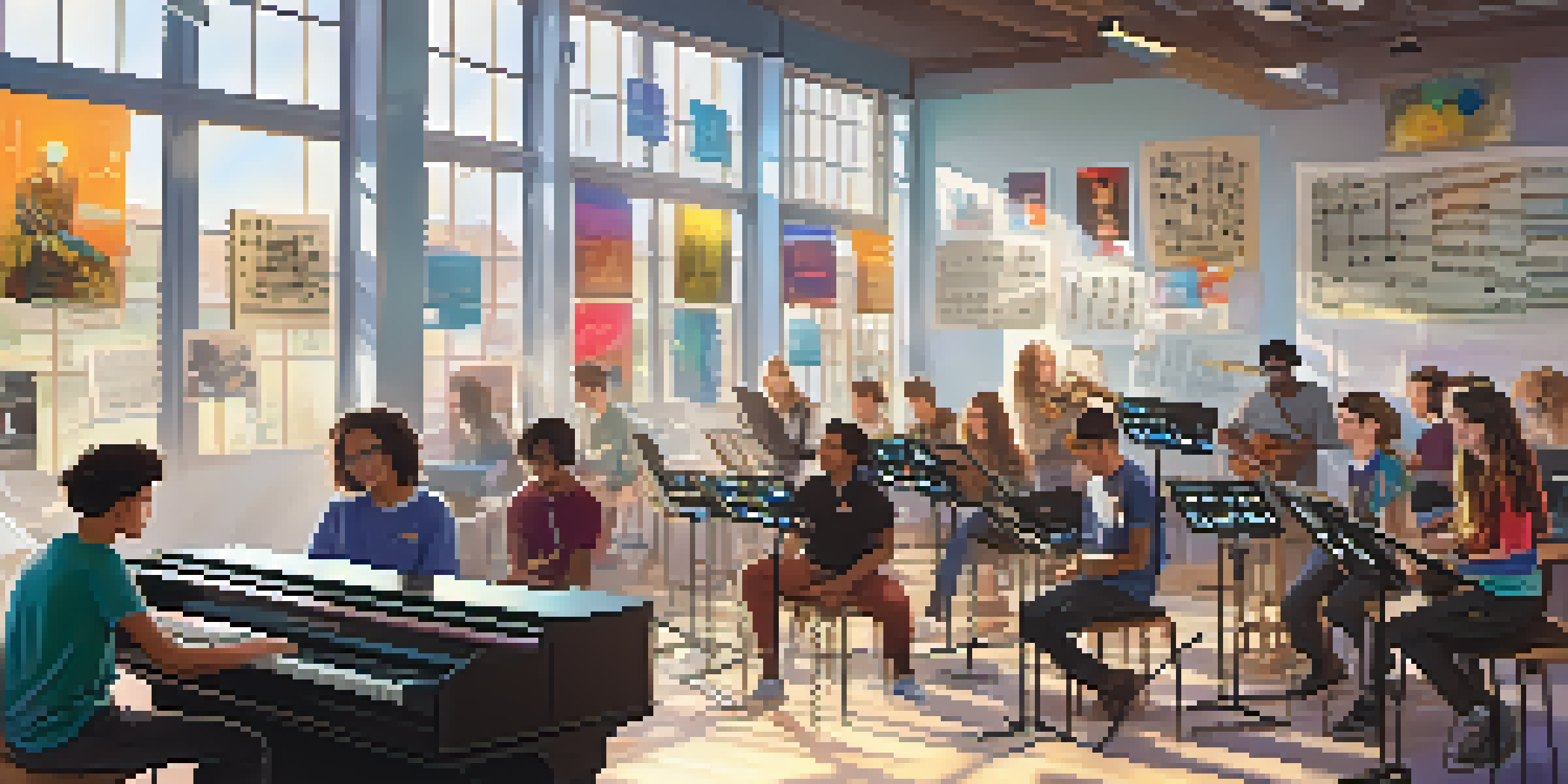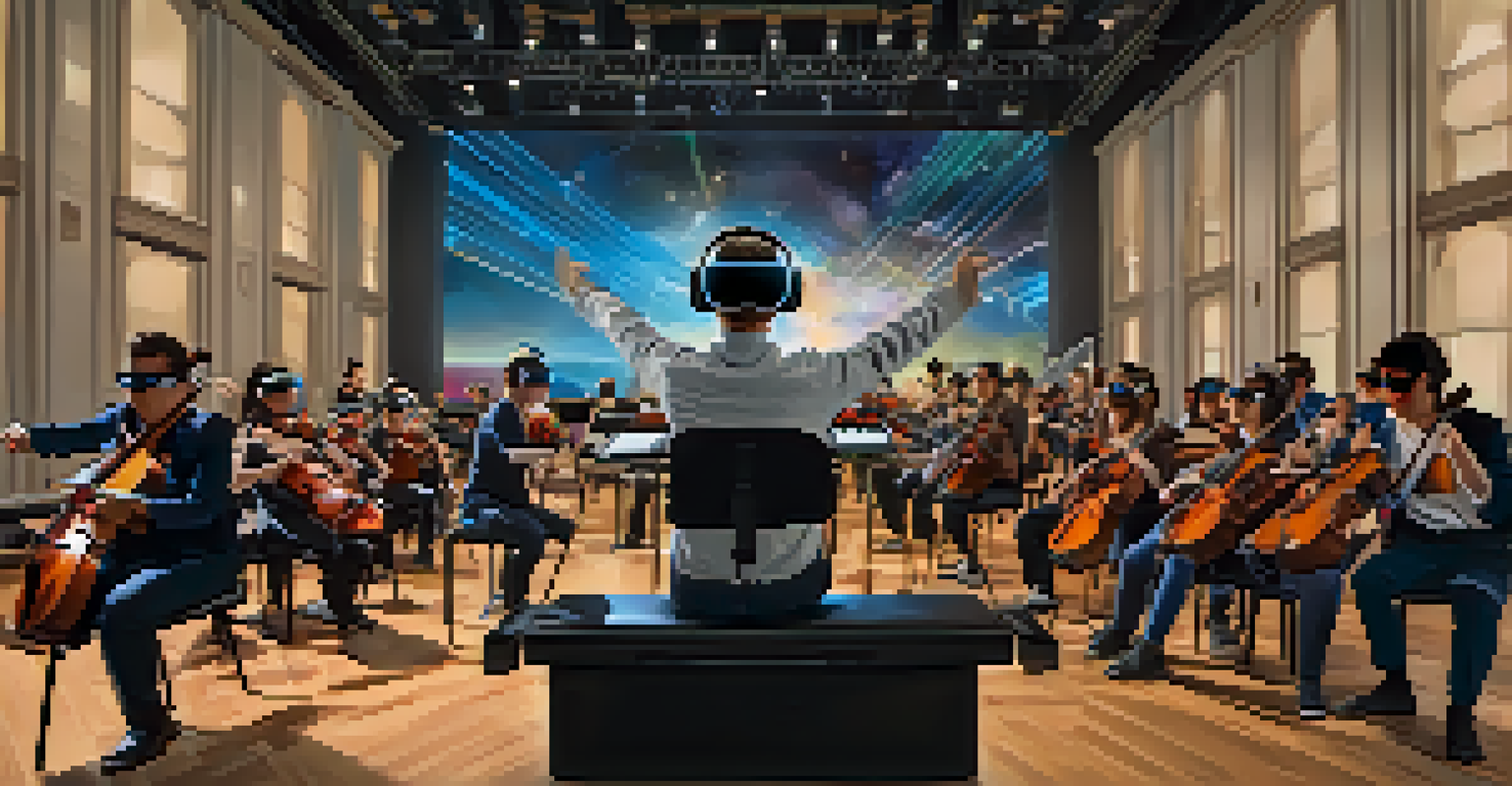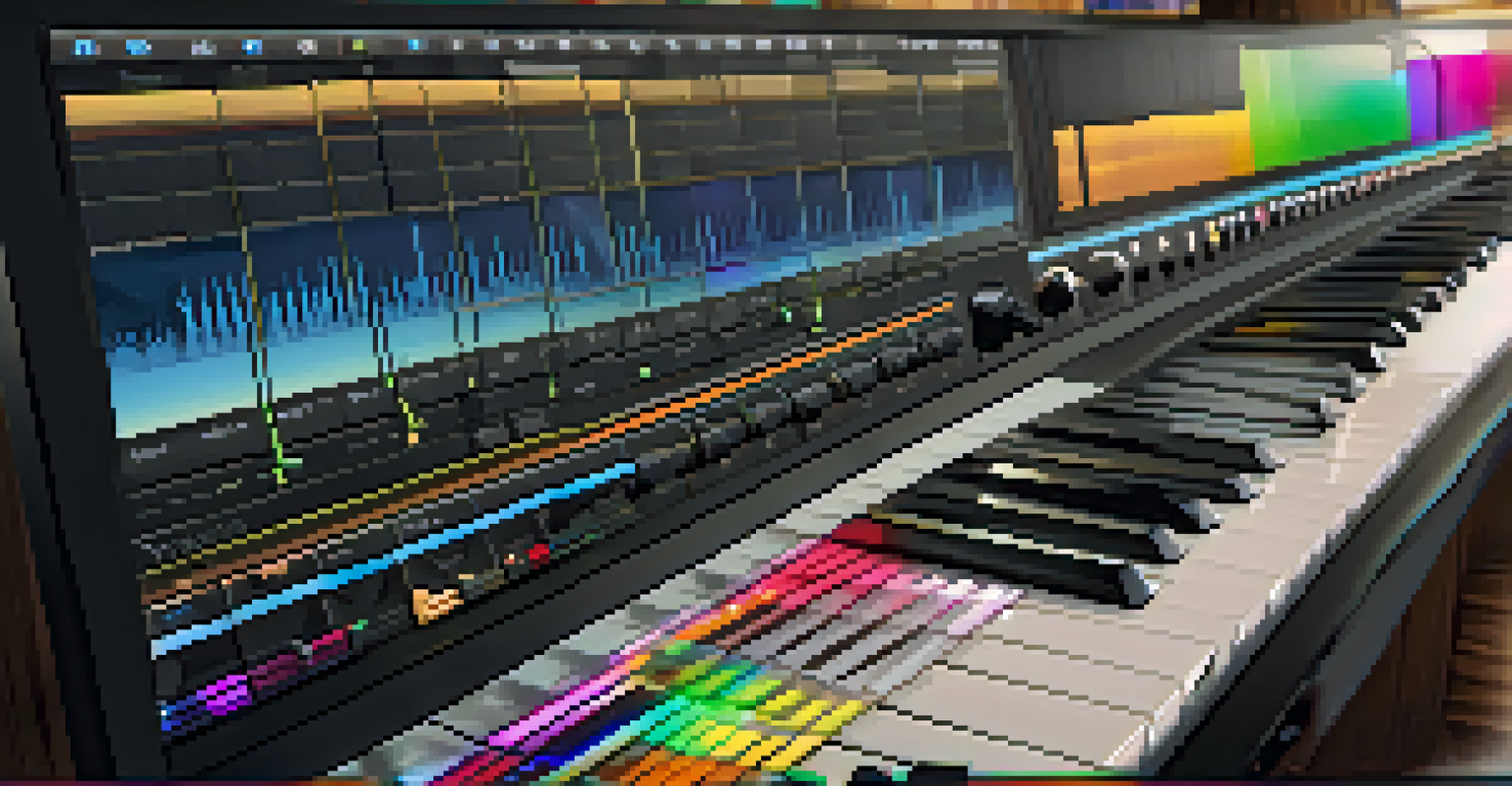The Future of Music Education: Technology in the Classroom

The Rise of Technology in Music Education
In recent years, technology has revolutionized many aspects of our lives, and music education is no exception. From apps that teach music theory to software that allows students to compose their own pieces, the options are growing rapidly. This shift is not just about convenience; it’s about accessibility and engagement for learners of all ages.
Technology will not replace great teachers, but technology in the hands of great teachers can be transformational.
Imagine a classroom where students can collaborate in real-time, regardless of their location. With tools like online platforms and virtual instruments, music education is becoming more interactive and inclusive. This means that whether you are in a small town or a bustling city, the opportunity to learn and create music is at your fingertips.
Moreover, technology enables personalized learning experiences. Students can progress at their own pace, focusing on their interests and strengths, thus fostering a deeper connection to their musical education.
Incorporating Digital Instruments in Classrooms
Digital instruments are becoming increasingly popular in music education settings. Devices like MIDI keyboards and digital audio workstations (DAWs) allow students to experiment with sound in ways traditional instruments cannot. This hands-on approach not only enhances creativity but also encourages students to explore various musical genres and styles.

For instance, a student interested in electronic music can compose tracks using software, while another might prefer to create orchestral pieces with virtual instruments. The flexibility offered by these digital tools caters to diverse musical interests and talents, making learning more engaging.
Tech Revolutionizes Music Education
Technology enhances accessibility and engagement, allowing learners to connect and create music from anywhere.
Additionally, digital instruments often come with built-in tutorials and learning modules, allowing students to learn independently. This empowers them to take ownership of their musical journey and explore new avenues of creativity.
Online Learning Platforms: A Game Changer
The emergence of online learning platforms has transformed how music education is delivered. Websites and apps like YouTube, Coursera, and even specialized music teaching platforms offer countless resources and courses. This democratizes access to high-quality education, enabling students to learn from the best instructors worldwide, often at little to no cost.
Music is the shorthand of emotion.
For example, a student in a remote area can take a masterclass with a renowned musician without the need for travel. This not only broadens their knowledge but also inspires them to push their boundaries in music.
Moreover, these platforms often include community features, allowing students to connect with peers and instructors. This fosters a sense of belonging and collaboration, vital for any aspiring musician.
The Role of Artificial Intelligence in Music Education
Artificial intelligence (AI) is making waves in various fields, and music education is no exception. AI tools can analyze a student’s playing style, provide instant feedback, and even suggest areas for improvement. This personalized feedback loop can dramatically enhance the learning process.
For instance, AI-driven applications can help students practice their instruments by offering real-time suggestions on pitch and rhythm. This immediate feedback can be more effective than traditional methods, where students might wait for a teacher's input.
Digital Tools Foster Creativity
Incorporating digital instruments and platforms empowers students to explore diverse musical styles and learn independently.
Additionally, AI can assist in composing music, allowing students to experiment with different styles and genres. This encourages creative exploration and helps them develop their unique musical voice.
Utilizing Social Media for Music Collaboration
Social media has become a powerful tool for musicians to connect and collaborate, and it’s influencing music education as well. Platforms like Instagram, TikTok, and SoundCloud allow students to share their work, receive feedback, and collaborate with others globally. This not only builds confidence but also fosters a supportive community.
For example, a student might post a video of their performance and receive constructive feedback from fellow musicians worldwide. This kind of interaction can be incredibly motivating and helps students feel connected to a larger musical community.
Furthermore, these platforms can serve as a launchpad for young artists, giving them exposure and opportunities they might not have otherwise. They learn the importance of sharing their creations and branding themselves as musicians.
The Impact of Virtual Reality on Music Learning
Virtual reality (VR) is an exciting frontier in music education, allowing students to immerse themselves in environments that enhance their learning experience. Imagine students being able to step into a virtual concert hall or a recording studio, exploring the intricacies of music production in an engaging way. This immersive experience can deepen their understanding and appreciation of music.
For instance, VR technology can simulate playing alongside a full orchestra, providing students with a unique opportunity to practice their timing and coordination. Such simulations can make learning feel more real and impactful.
AI and VR Enhance Learning Experience
Artificial intelligence and virtual reality provide personalized feedback and immersive environments, enriching the music learning journey.
Moreover, VR can also break down geographical barriers, allowing students from different parts of the world to collaborate on projects as if they were in the same room. This not only enhances learning but also fosters a sense of global musical community.
Challenges and Considerations in Tech-Enhanced Education
While the integration of technology in music education offers many benefits, it also comes with challenges. Not all students have equal access to the necessary devices or high-speed internet, which can create disparities in learning opportunities. Addressing these access issues is crucial to ensure that every student can benefit from tech-enhanced education.
Additionally, teachers must adapt to these new tools and methods, which requires ongoing professional development. They need to be equipped not only with technical skills but also with strategies to effectively integrate technology into their teaching practices.

Lastly, there’s the question of maintaining the human element in music education. While technology can enhance learning, it’s essential to balance it with traditional methods to ensure students develop a well-rounded musical education.